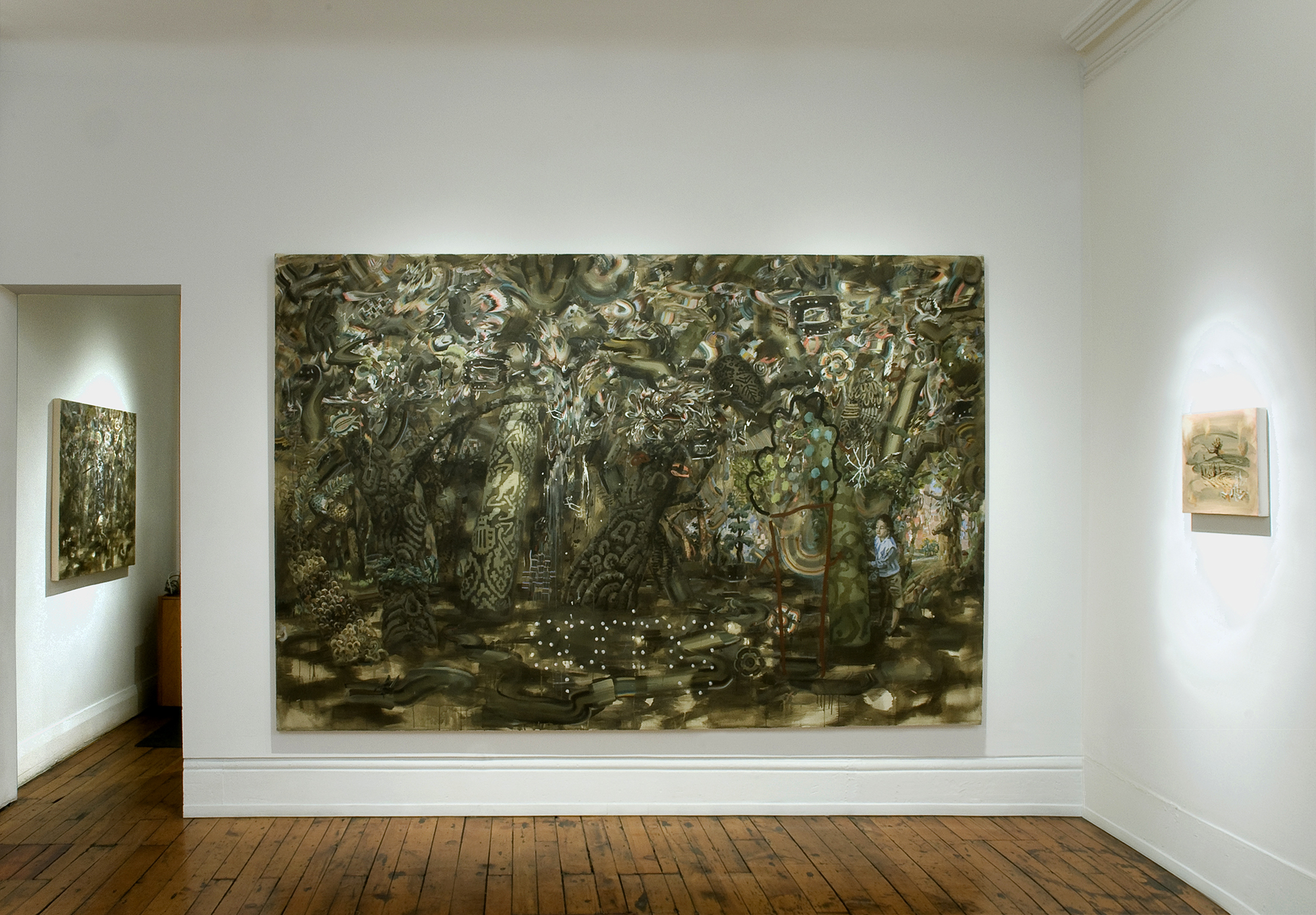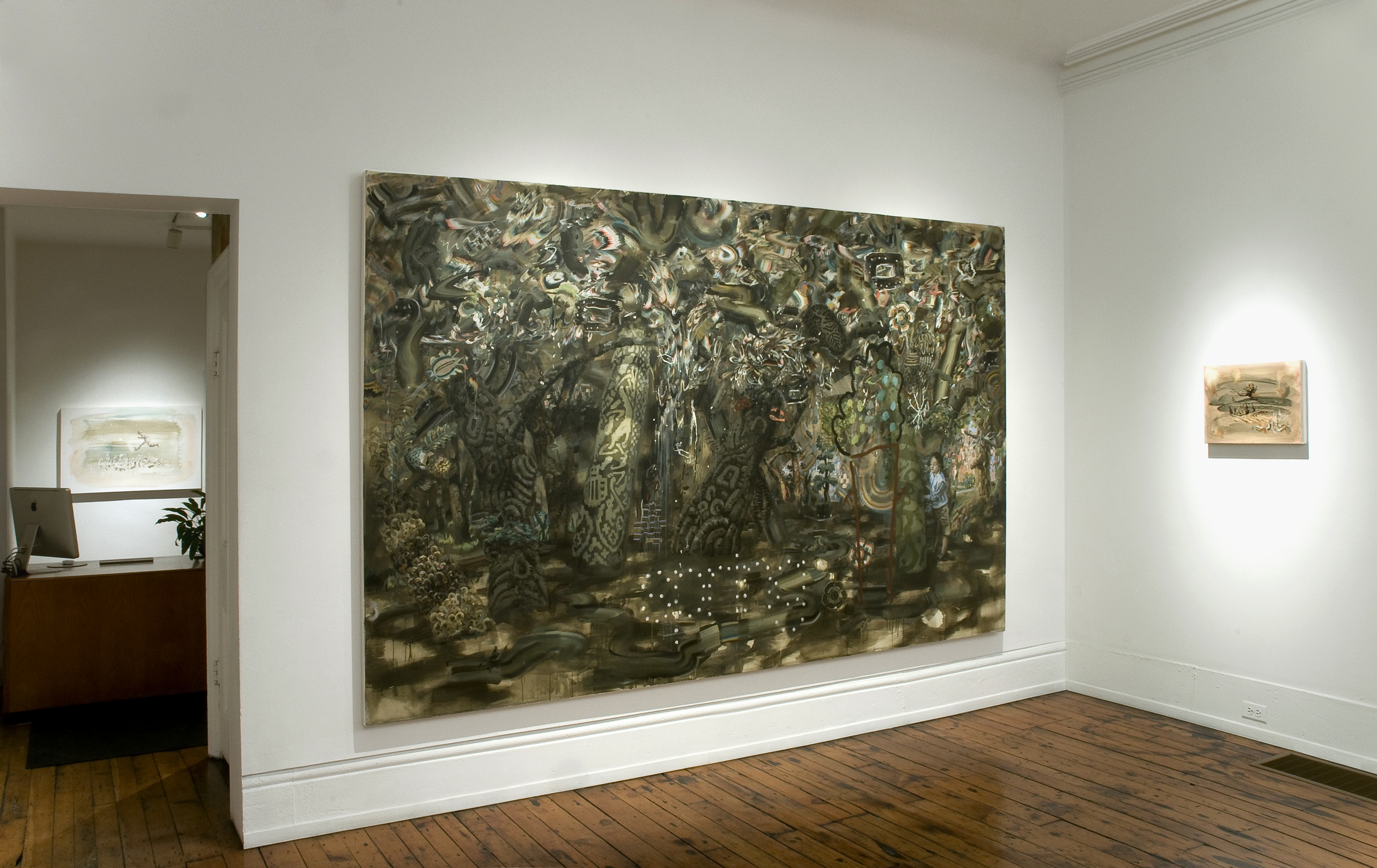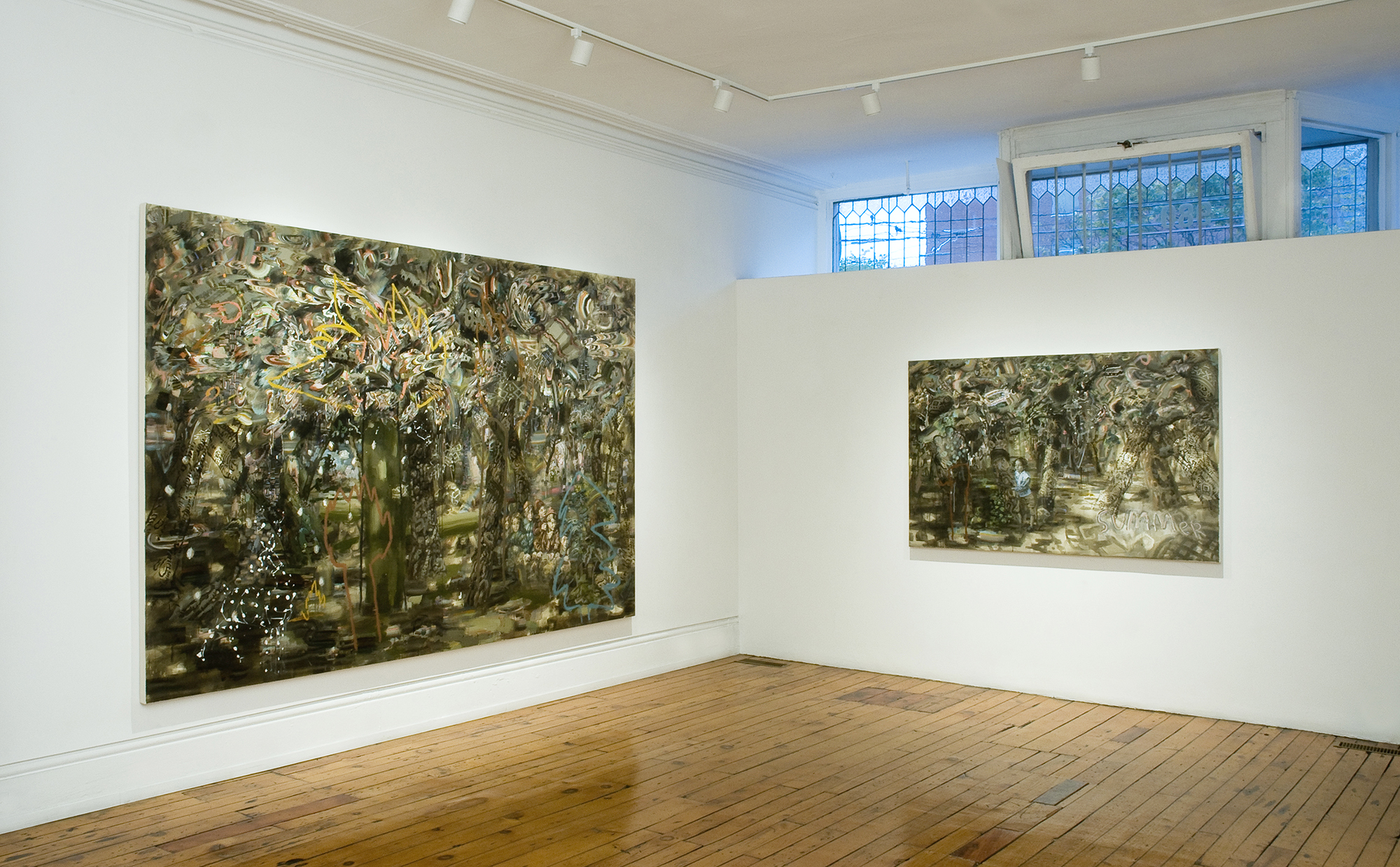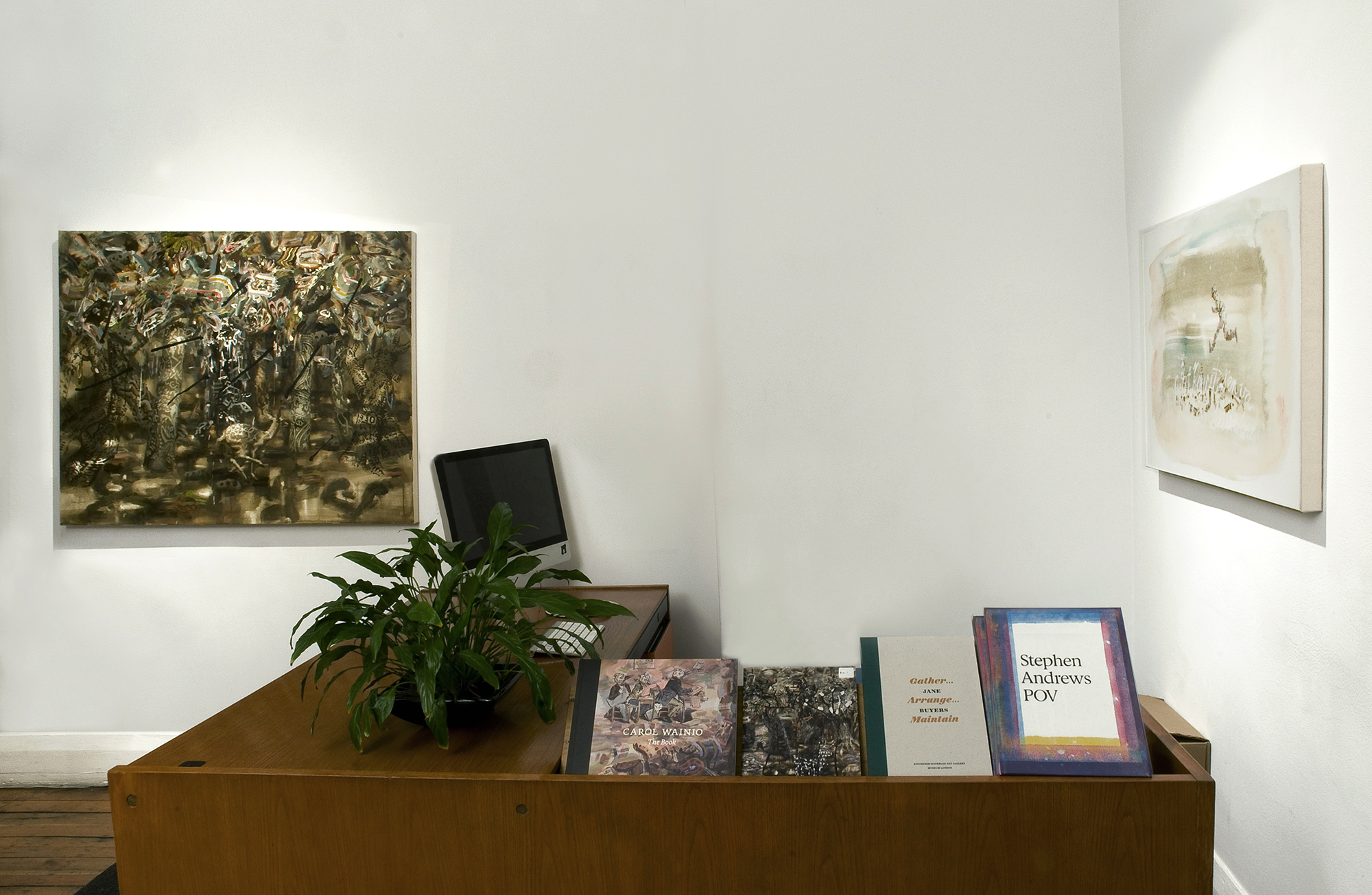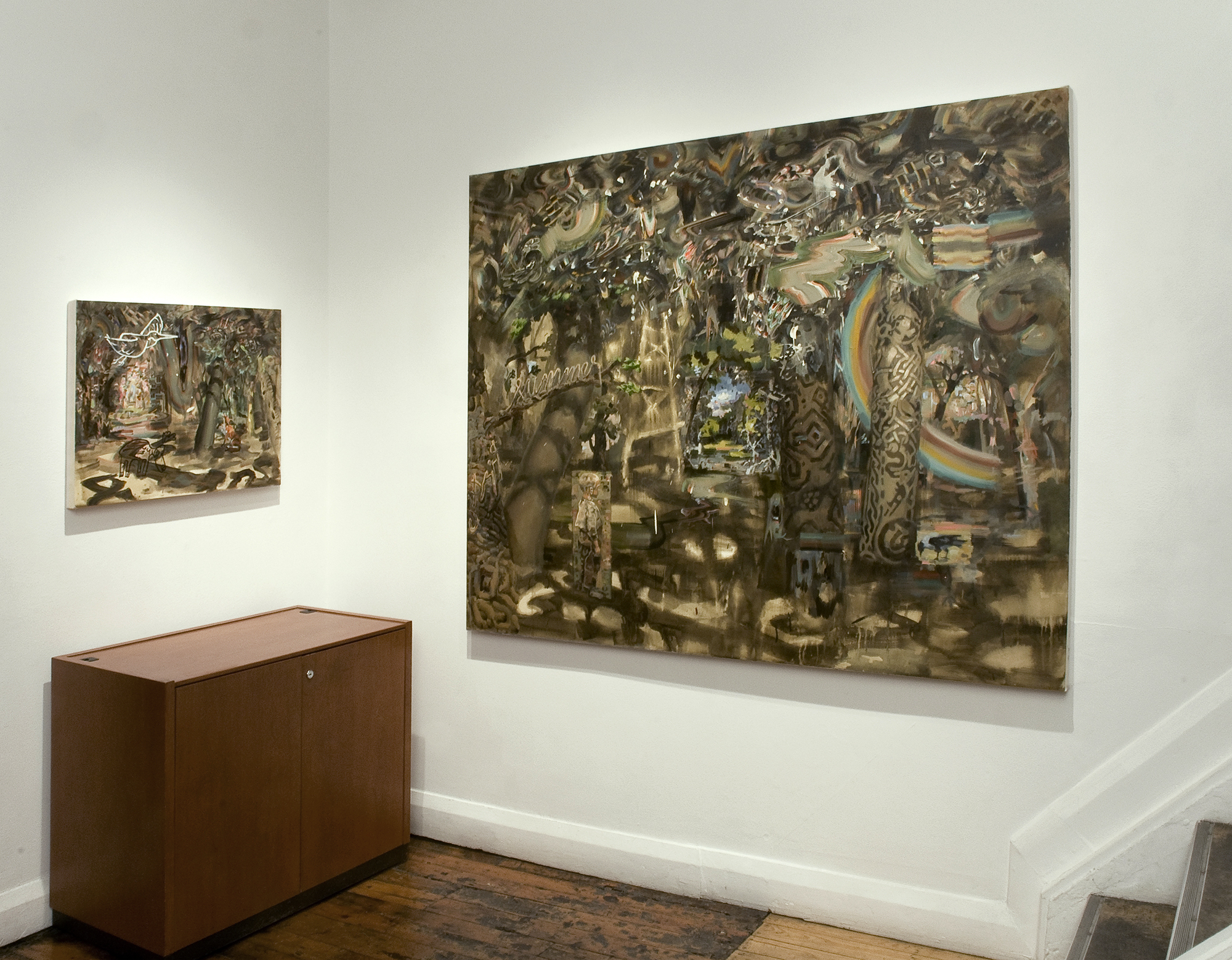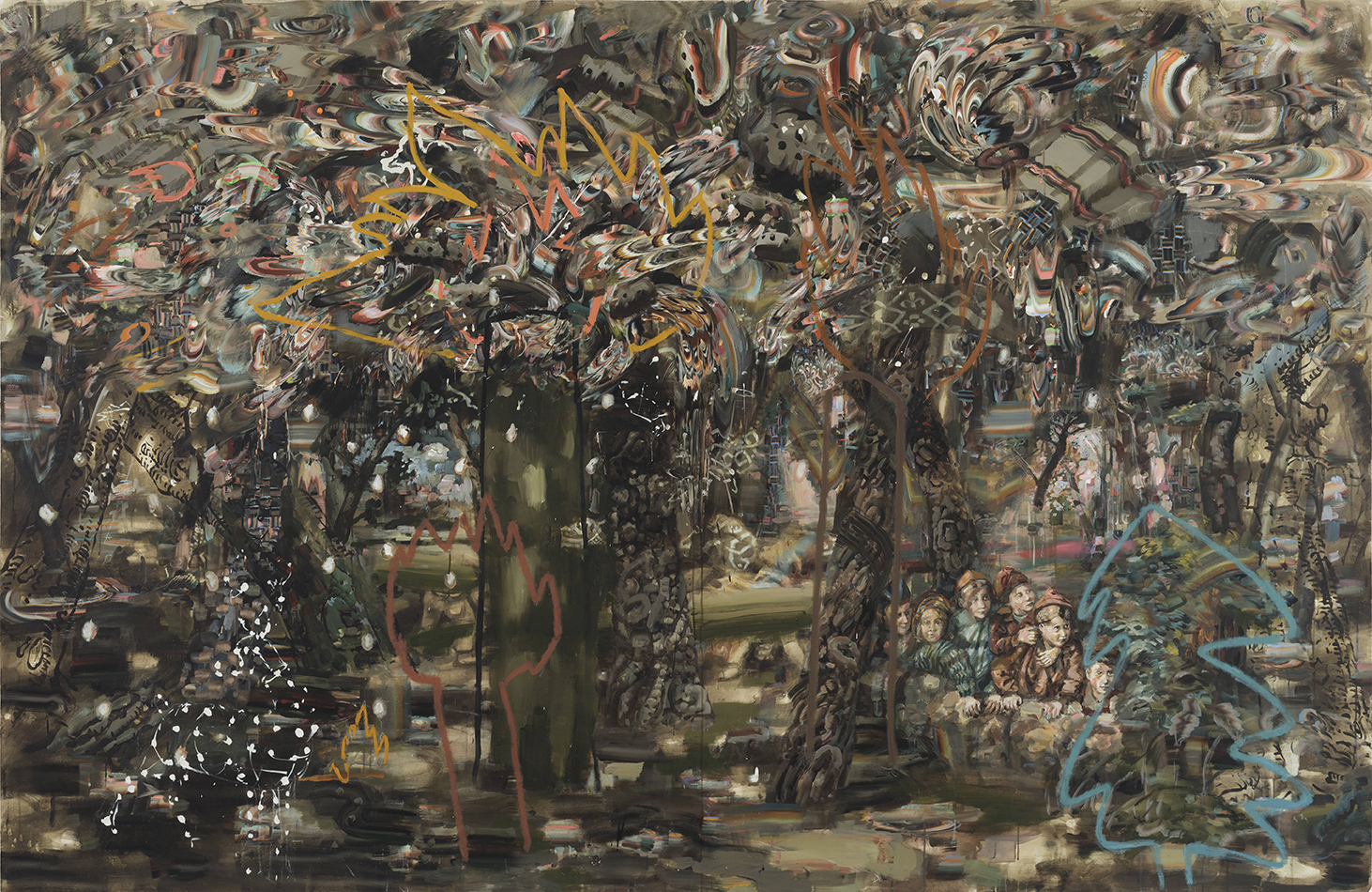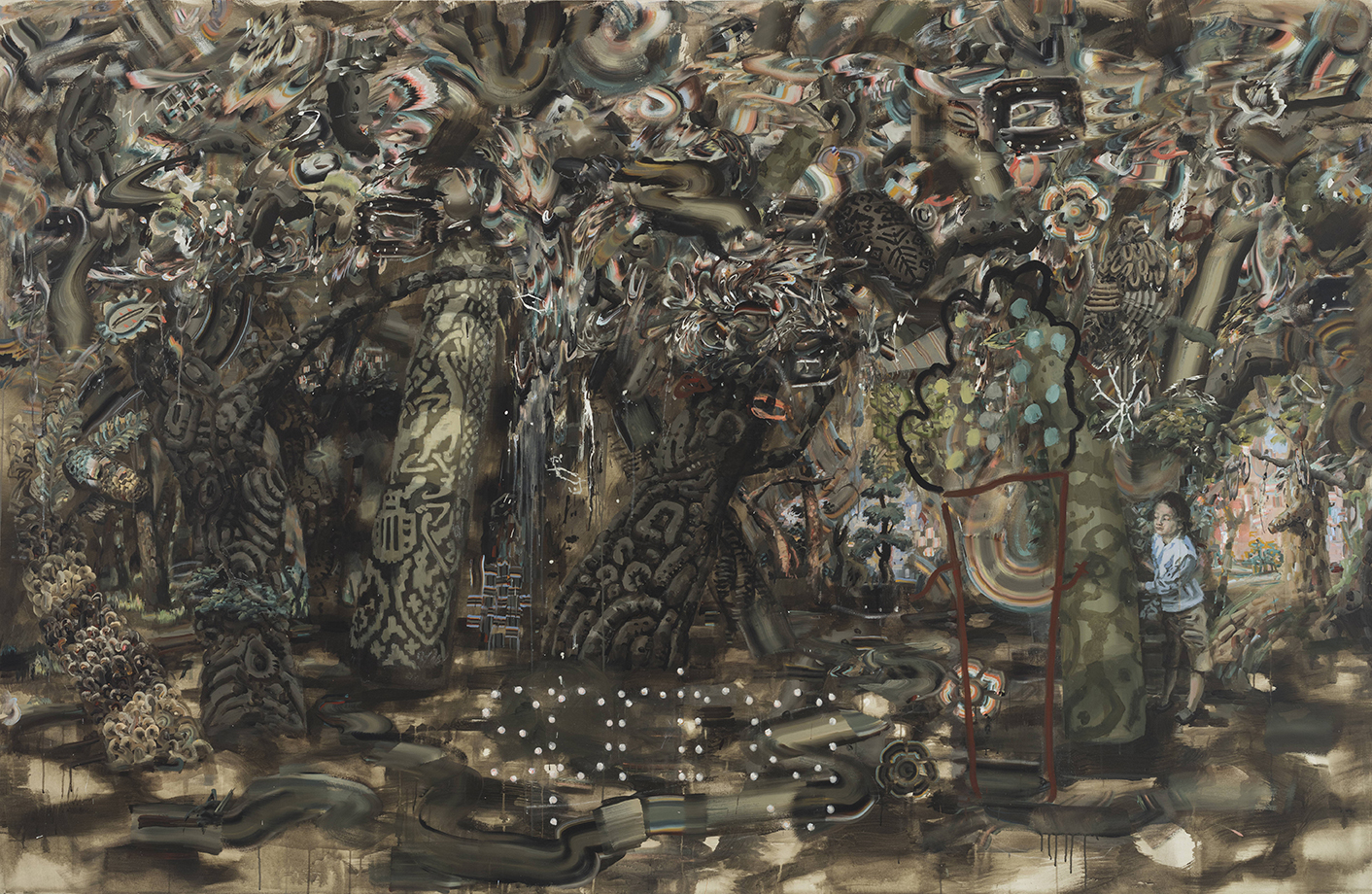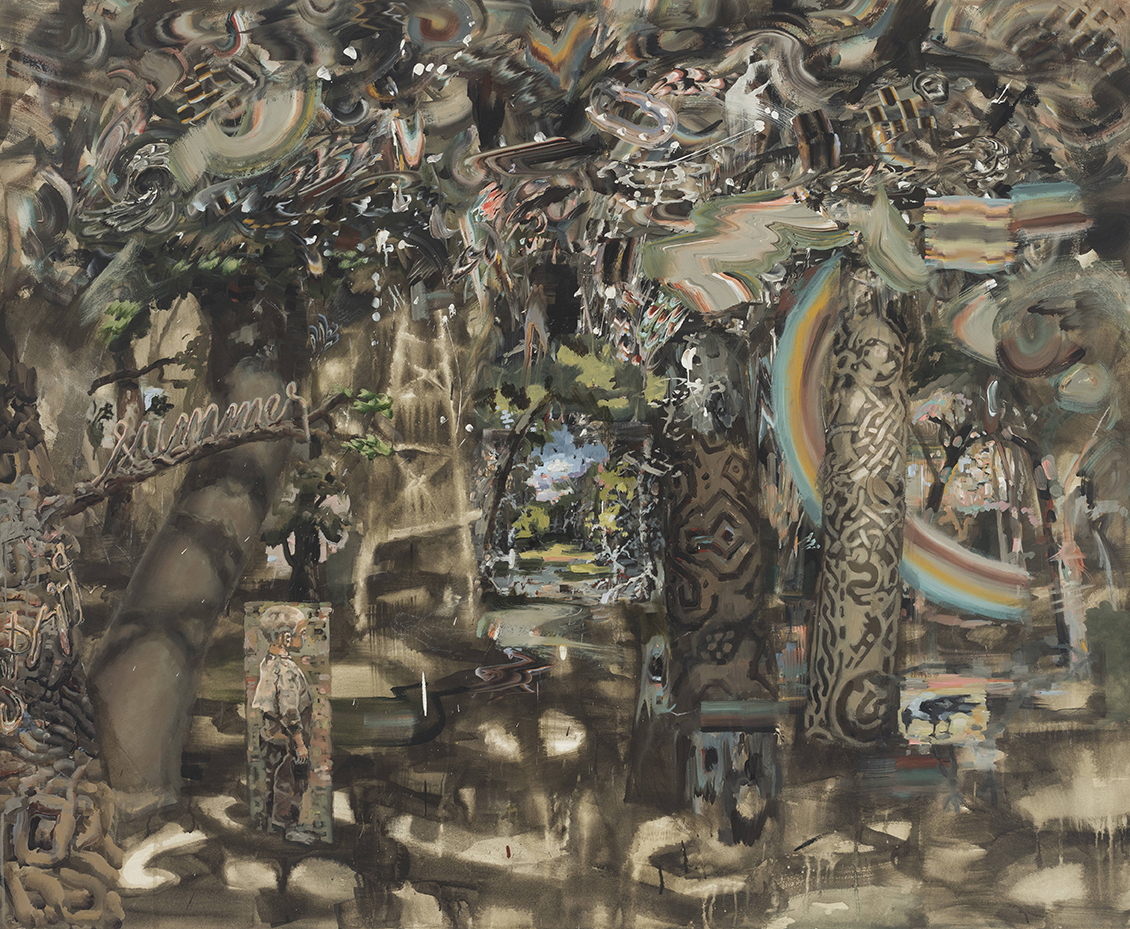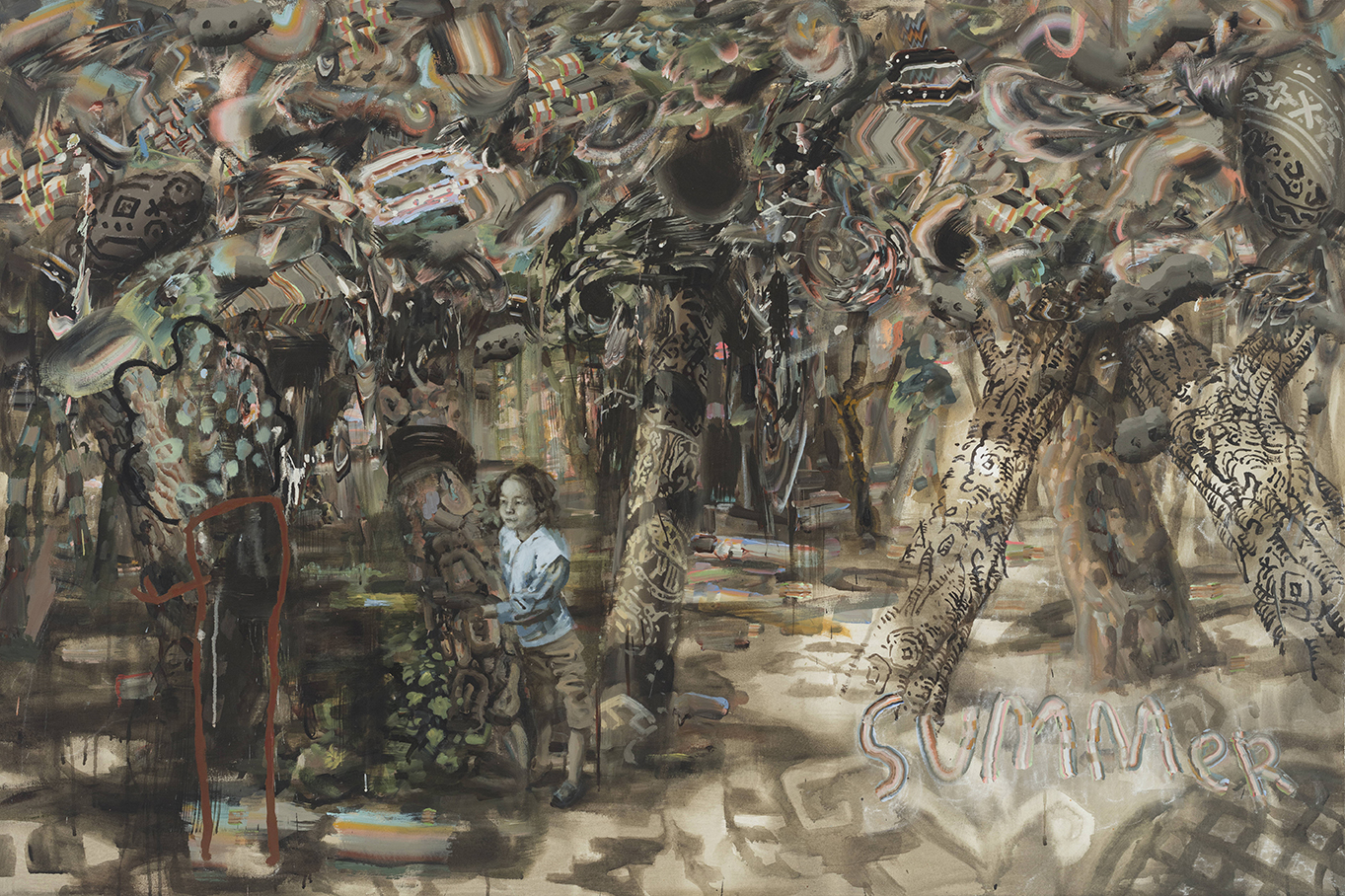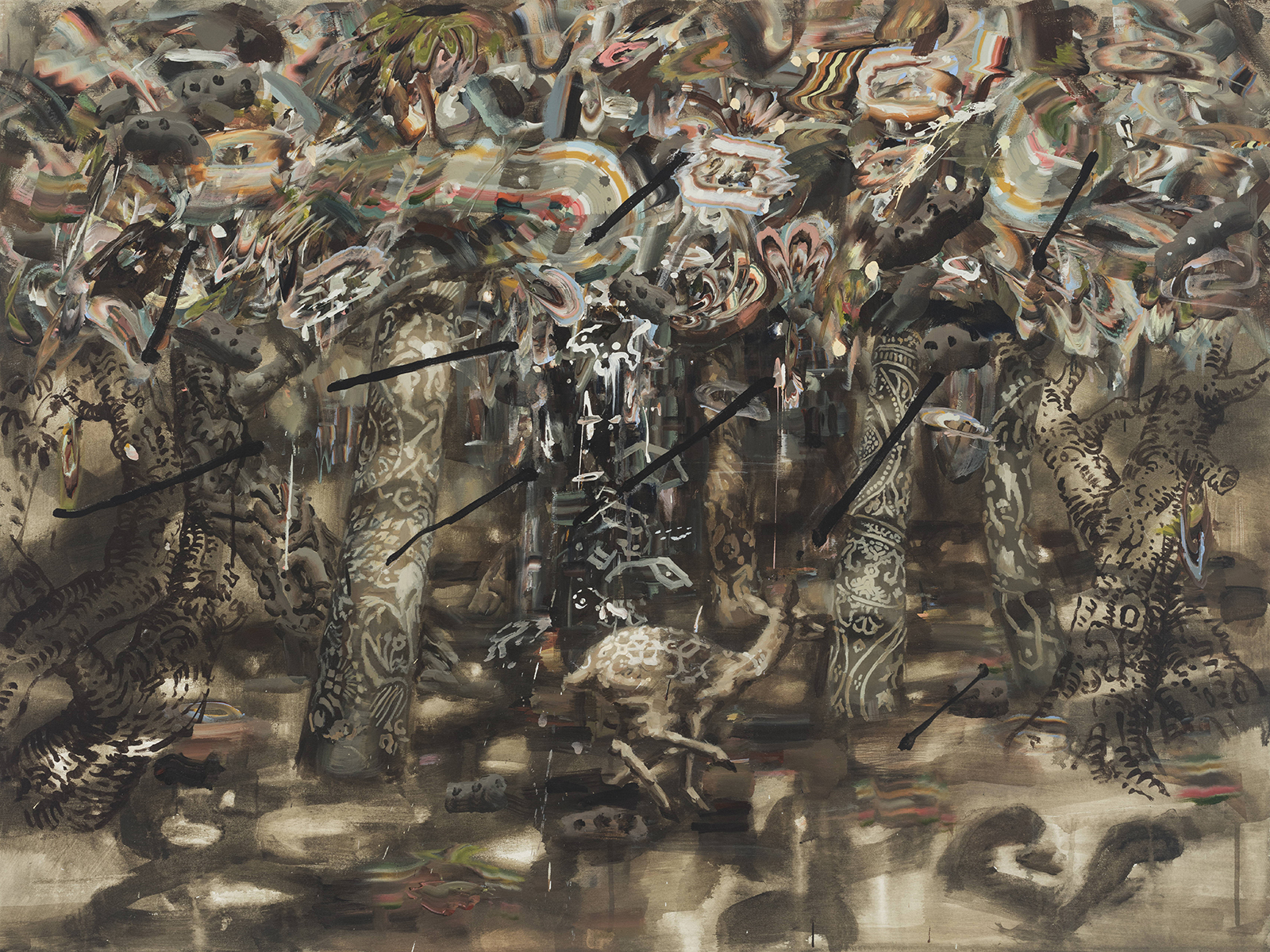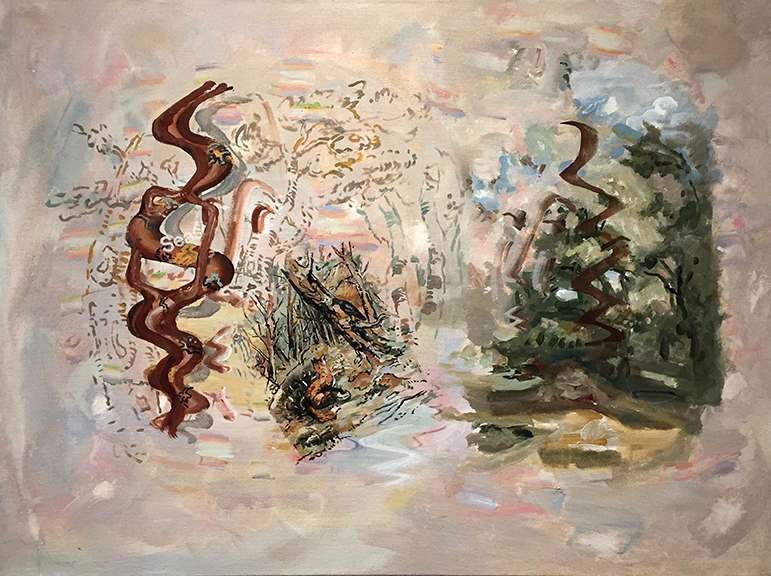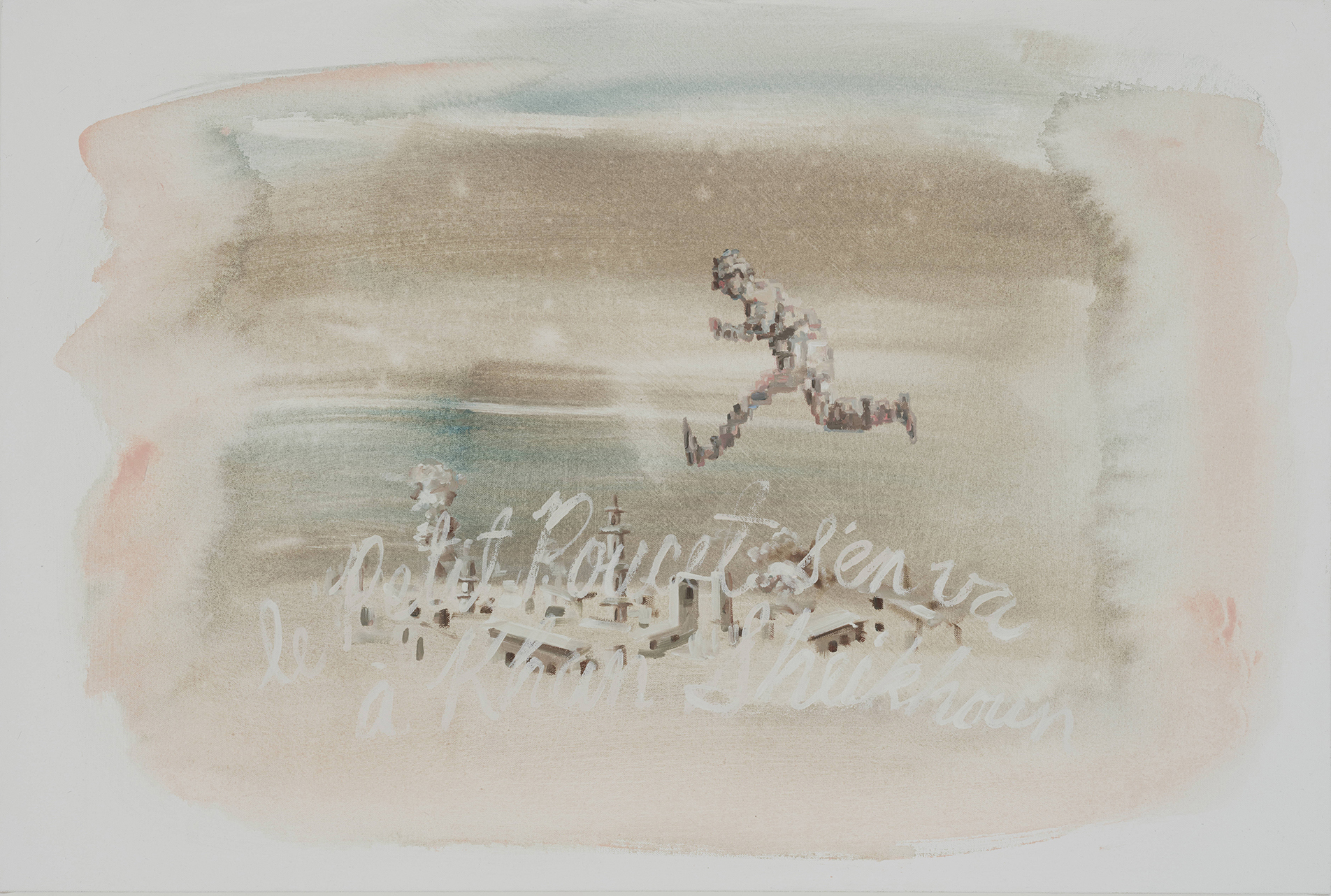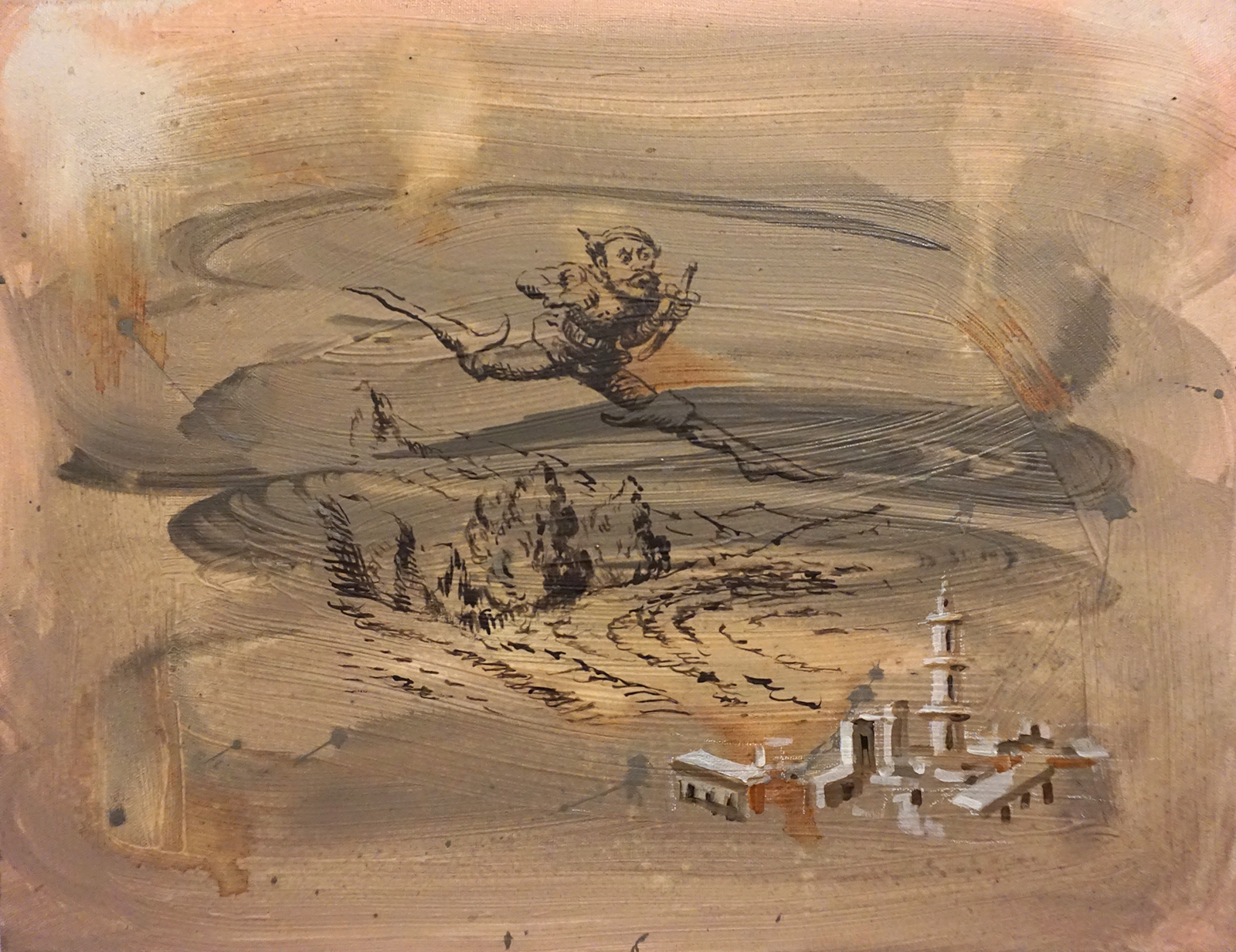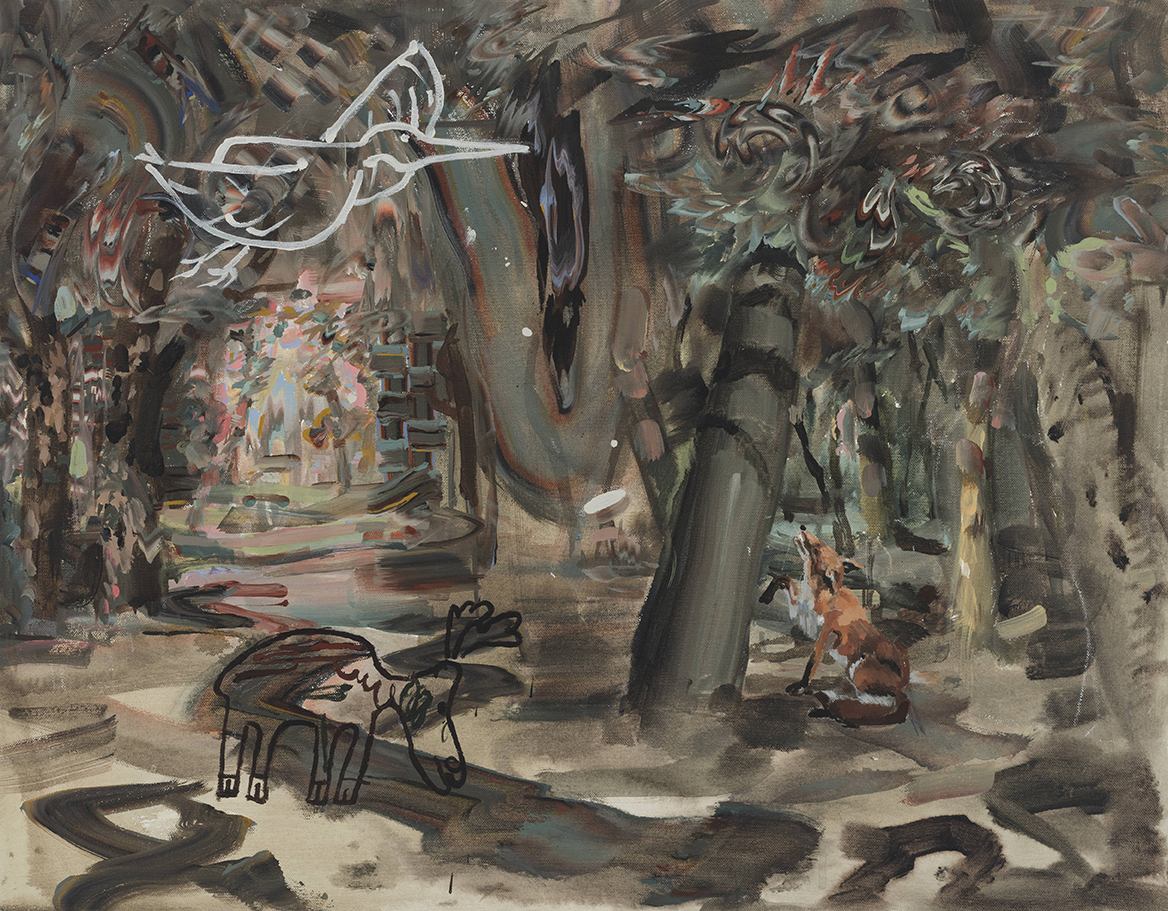Stories, Seasons
Carol Wainio
new paintings
October 13 - November 11, 2017
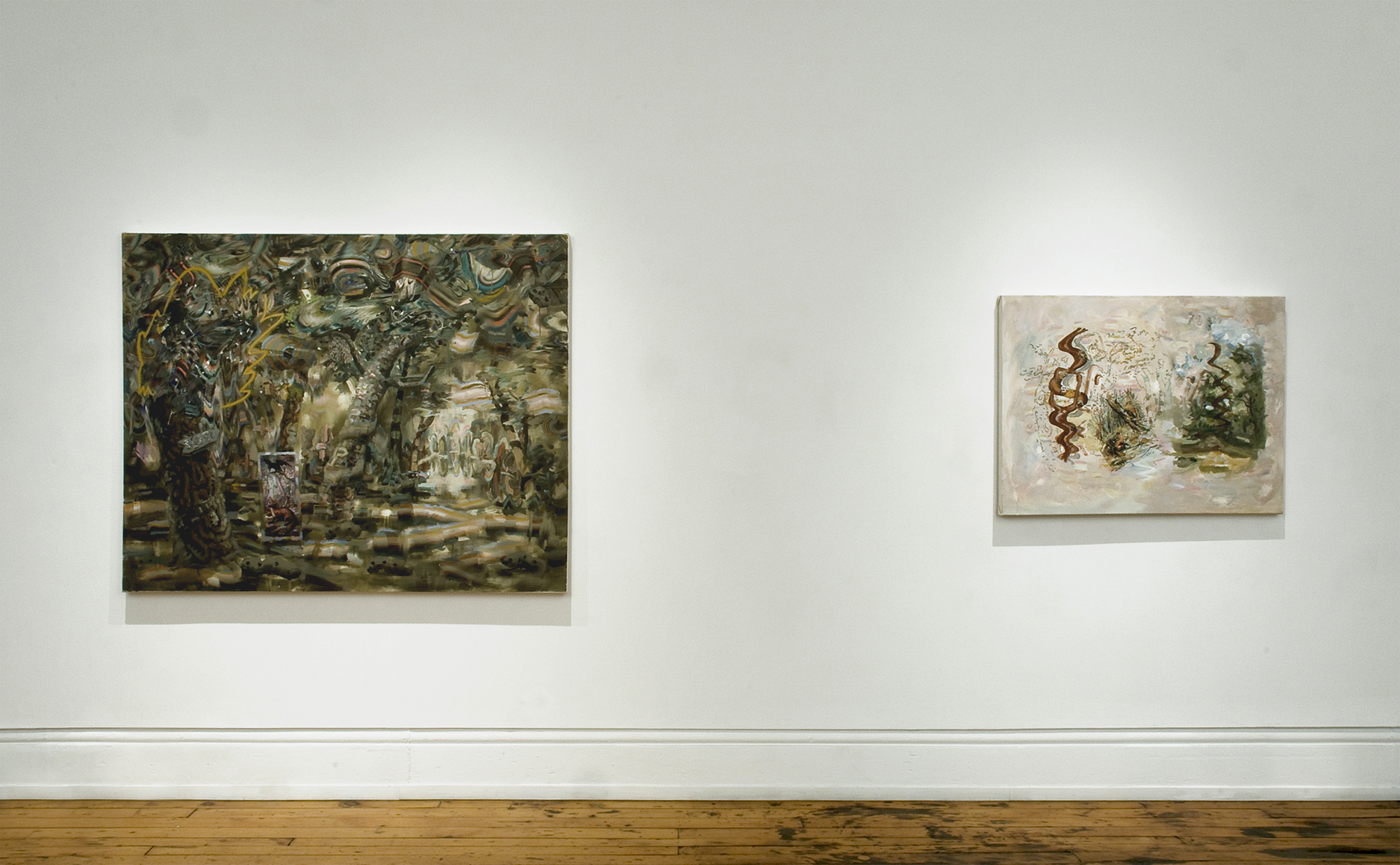
Stories, Seasons
I work within the ‘many universes’ that open each time one takes up a brush in the face of centuries of art history and in a medium repeatedly declared dead and revived. The paintings draw together diverse references from various traditions in a discursive effort to investigate and re-stage narratives of transformation and desire, scarcity and excess, and to wonder about the past and future. Representation, figure/ground dialectics, and narrative are present in these wonderings within their broadest meanings (formal, pictorial, social, political). The work occupies a space between the visceral and cerebral, where the slowness of painting acts against the grain of technology. For several years my explorations have visited the largely vacated narratives of Western folk and fairy tale to explore the death and persistence of these forms and the modes of time and experience associated with them.
In European fairy tale (as in high art), the power of ‘representation’ and of transformational objects originated in their scarcity - something we, as socially mobile consumers of images and things can only dimly imagine. The fine boots that allowed a clever cat to transform his peasant master into a prince are a kind of historical hinge pivoting backwards and forwards - from a past where change in status was impossible, to a present where it is achieved through commodities and its magical “aura” diminished. These tales took on new roles in the 19th and early 20th century; Puss in Boots became a salesman for early consumer products - marketing smaller, cheaper changes in status as social mobility increased. While such transformations reside in our distant past, the scythe, ox and plough of 17th century illustrations is still echoed in parts of the globe where European modernism’s transformations are being ‘reproduced’ and Western “long ago” meets the “far away”.
Certain tropes and characters from these tales echo down the centuries, transformed but still resonant. Migrants and strangers met on the road or in the forest may wear a disguise. Decisions must be made as to whether to be kind or cruel, to let them in or turn them away. We seem to be experiencing a return to fairy tale or its conditions – particularly in polities like the U.S. As with any death, when social mobility stagnates, magical thinking surfaces. Representation, which once had specific meanings, devolves into self-reflection. Fairy tale is persistent.
Some observers note how Donald Trump’s language echoes fairy tale in its childish simplicity and use of sticky adjectives and overdrawn characters (the Wicked Witch or Evil Stepmother, Handsome Prince, Crooked Hillary, Little Rocket Man, Crying Chuck). One falls back on fairy tale to describe a very real child-king who is as vain, impetuous, and imperious as any character from Perrault, Andersen or Grimm. Otherwise dry political scientists dust off The Emperor’s New Clothes, “Mirror, mirror on the wall”, apparently at a loss for better descriptors.
But it is perhaps Le Chat Botté, whose later incarnations sold boot polish, shoes, household cleaners, matches, chocolate, beef extract, that is most appropriate to the current moment. Like the clever cat, a sitting president is a trickster and hawker whose wild pitches proved as effective for those moving down the social ladder in 21st century America as they were for those moving up in 19th century Europe. Among early advertisements starring Puss in Boots is one for Trumpf Chocolates - the German variant of the presidential forefather’s name.

One of the most interesting images of Le Chat Botté comes from a favoured illustrator of Walter Benjamin, Johann Peter Lyser. It shows the cat as a top-hatted capitalist. Benjamin’s prescient reflections on the shrinking of experience, the psychology of capitalist production, and gambling (“where no game is dependent on the preceding one”), along with his passion for children’s books, produced cryptic musings in which he distinguished between a current political mantra, ‘winning’, and wishing:
The earlier in life one makes a wish…the further [it] reaches out in time, the greater the hopes for its fulfillment… It is experience that accompanies us to the far reaches of time, that fills and articulates time. Thus, a wish fulfilled is the crowning of experience. In folk symbolism, distance in space can take the place of distance in time; that is why the shooting star… has become the symbol of a fulfilled wish.
For several years, my work has been more focused on the trope of the forest, where during centuries of folk tale various transformations occurred, where strangers were met with suspicion or kindness, maidens spared by kind huntsmen, and where children were abandoned by parents in times of want (Hansel and Gretel, Le Petit Poucet). The forest itself, like other natural ‘grounds’, is now changing and transforming, and not through magic. Future generations are effectively abandoned - whether due to scarcity, an insatiable desire for excess, or both. My wondering and worrying about subtle aspects of these shifts as much as the physical consequences of climate change produced paintings that bring together images from illustrations and early photographs of these stories along with various references to seasons and weather.
Seasons represent our most profound narrative and framework for experience—a reassuring recurrence around which past and future, human and nature, cluster and coalesce. Pictures of the seasons are still made by children before devices replace the blank spaces needed for creation. Our common and individual life of stable seasons is giving way to extreme weather events and hastening the shrinking of experience described by Benjamin and central to these stories. We no longer anticipate time or seasons in the same way. The paintings allow me to reflect on these aspects of what is lost, what is retained, and an uncertain future.
-- Carol Wainio, 2017
Carol Wainio was born in Sarnia, Ontario in 1955. After studies at the Nova Scotia College of Art and Design and the University of Toronto, she earned an M.F.A. from Concordia University in 1985. She taught in the Visual Arts Department at the University of Ottawa from 1987 to 1989 and was an assistant professor in the Department of Visual Arts at Concordia from 1989 to 1998. She lives and works in Ottawa, where she is an adjunct professor at the University of Ottawa. Her exhibition The Book, curated by Diana Nemiroff for Carleton University Art Gallery, surveyed works from 2002-2010 and toured extensively in Canada. A comprehensive hardcover catalogue is available. An exhibition of recent work, Old Masters, was organized by Crystal Mowry at the Kitchener Waterloo Art Gallery, March 8 - April 28, 2013. Wainio's work was exhibited at the Montreal Museum of Fine Arts as part of the group exhibition Her Story Today, October 8, 2015, to August 7, 2016. Wainio was a recipient of the Governor General's Award in Visual and Media Arts in 2014.
















